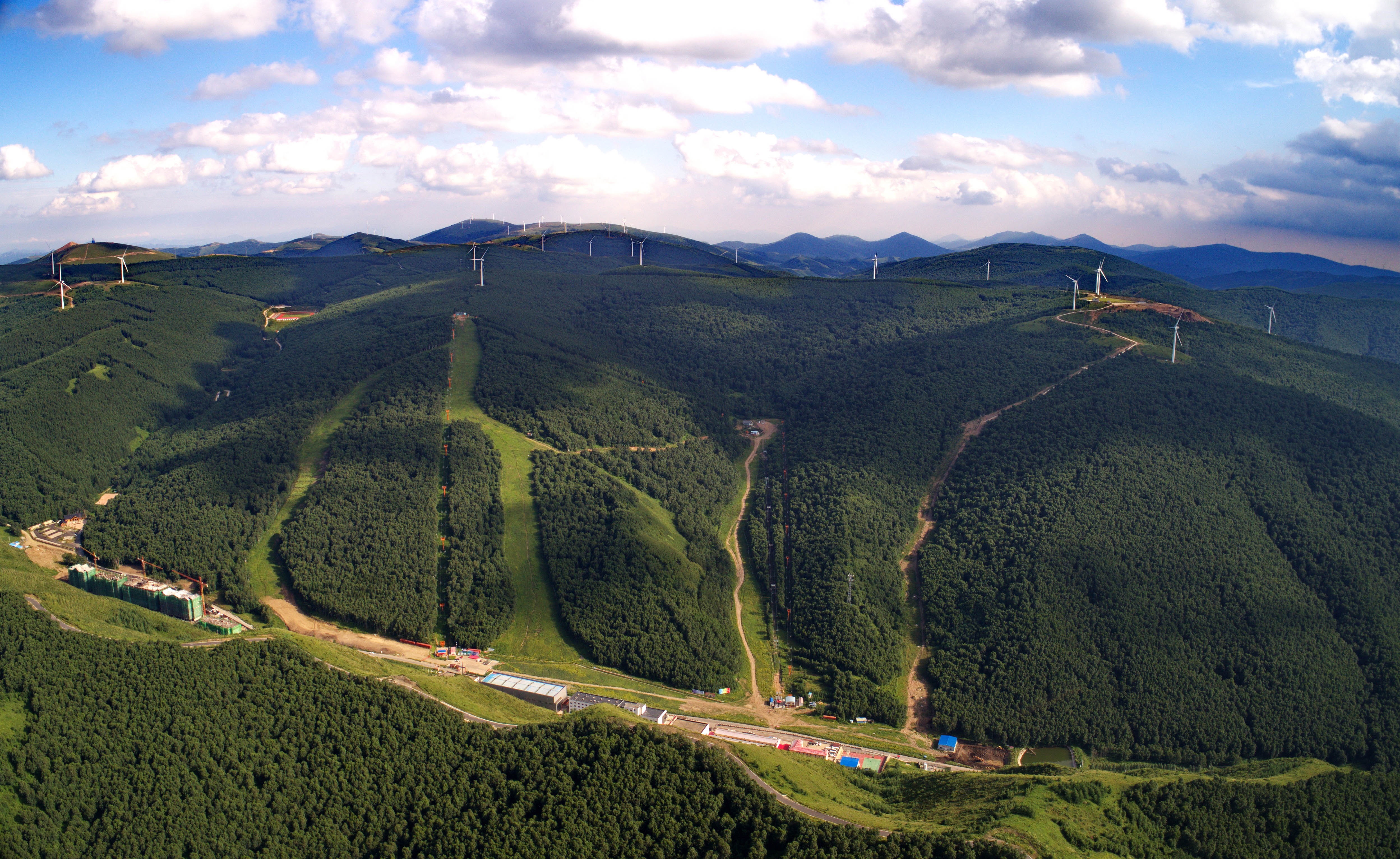Environment protection continues to be one of China's top priorities
- By Rachana Gupta
 0 Comment(s)
0 Comment(s) Print
Print E-mail China.org.cn, March 12, 2019
E-mail China.org.cn, March 12, 2019

China's two most important annual political meetings – the National People's Congress (NPC) and the Chinese People's Political Consultative Congress (CPPCC) – famously known as the "Two Sessions" kicked off in early March. While presenting the Government Work Report during the opening meeting of the second session of the 13th NPC, Premier Li Keqiang stressed the need to increase support to tackle three major challenges: risk, poverty and pollution. Emphasizing the sustainable development of the nation, he said, "Promoting green development comes down to every single one of us. Its success hinges on action and commitment. We must all work together to create a beautiful and liveable environment for our people."
In line with this goal, the Government Work Report stated that "the country will strengthen pollution prevention and control, enhance ecological improvement, and make big strides in green development." The report further stated that China aims to reduce sulphur dioxide and nitrogen oxide emissions by 3 percent in 2019, while decreasing the density of PM 2.5 (a major particle pollutant) in all major locations including the Beijing-Tianjin-Hebei region, the Yangtze River Delta, and the Fenhe-Weihe River Plain area. Additionally, as per the draft budget report submitted to the national legislature, the Chinese central government plans to allocate 25 billion yuan (US$3.7 billion) to air pollution control measures, marking a 25 percent year-on-year increase.
China has already proved itself a global leader in terms of its environmental protection initiatives and the steps it has taken to implement them in previous years. In 2018 alone, the average density of PM 2.5 in China fell by 10.4 percent year-on-year. The country has also significantly reduced the use of coal by phasing out almost 23,000 coal-fuelled small boilers across the nation, and by ramping up usage of clean energy. According to the National Energy Administration, by the end of the third quarter last year, the capacity of coal power generators with ultra-low emissions already reached more than 750 million kilowatts in China, accounting for over 75 percent of the country's total installed capacity of coal power generating units. The gradual transformation of coal power generators also resulted in an 86 percent reduction in sulphur dioxide emissions, an 89 percent reduction in nitrogen oxides, and 85 percent less smoke dust from 2012 to 2017, according to the China Electricity Council.

Additionally, according to a report published by the Bloomberg New Energy Finance and the sustainable energy finance center in April last year, China made nearly half of the world's new renewable energy investment in 2017, totaling a whopping sum of US$279.8 billion. Also, solar cells' production in China has increased 100-fold between 2005 and 2014. Notably, China's renewable energy investment has swelled by 30 percent from 2016. This figure is almost three times that of the U.S. whose investment in the sector went down by 6 percent from 2016 to US$40.5 billion in 2017. In 2015, China surpassed the U.S. to become the world's largest market for electric cars. According to the China Association of Automobile Manufacturers, the country witnessed total sales of approximately 1.03 million electric cars in the first eleven months of 2018, up 68 percent from the same period in 2017.
An action plan on clean energy consumption was also released by the National Development and Reform Commission and the National Energy Administration (NEA) in February this year. According to the plan, China will spare no effort to increase the utilization rates of wind, photovoltaic and water power to an internationally advanced level of 95 percent by 2020.
It is also worth noting that China has already made significant progress in the use of clean energy, in order to fulfil its commitment in the Paris agreement to cut its greenhouse gas emissions per unit of GDP by 60-65 percent from 2005 levels. In 2018, the amount of wasted photovoltaic power in China dropped by 1.8 billion kilowatt-hours from 2017, while the amount of wasted wind power fell by 14.2 billion kilowatt-hours.

A recent report by NASA also highlighted the positive impact brought about by recent China's efforts in environmental protection. It stated that although China possesses just 6.6 percent of the planet's vegetated land area, it contributed to almost 25 percent of the total increase in vegetated land area. Afforestation and farming activities contributed 42 percent and 32 percent to this increase respectively. Last year, the Chinese State Forestry Administration also pledged to cover almost 23 percent of the country's total land-area with forests.
The Intergovernmental Panel on Climate Change (IPCC) in its recent report emphasized the impending dangers of climate change and pointed out the big difference in risks between global warming of between 1.5 and 2 degrees Celsius. It states that technically, it is possible to limit warming at 1.5-degrees Celsius but this would require huge behavioral and lifestyle changes. This target can be realized by substantially lowering greenhouse gas emissions by 2030 through the decarbonization of electricity production and improving energy efficiency in different sectors such as transportation, industries etc. Looking at the level of ongoing investment in the areas such as clean energy, the determination of the Chinese government to cut down the use of fossil fuels such as coal as well as the strong regulatory policies in place, it is clear that China has been taking all the right steps towards building a green economy and achieving its dream of building a moderately prosperous nation with a safe environment for its people by 2020.
Rachana Gupta is an active blogger, poet and freenlance content writer.
Opinion articles reflect the views of their authors only, not necessarily those of China.org.cn.
If you would like to contribute and have specific expertise, please contact us at opinion@china.org.cn.





